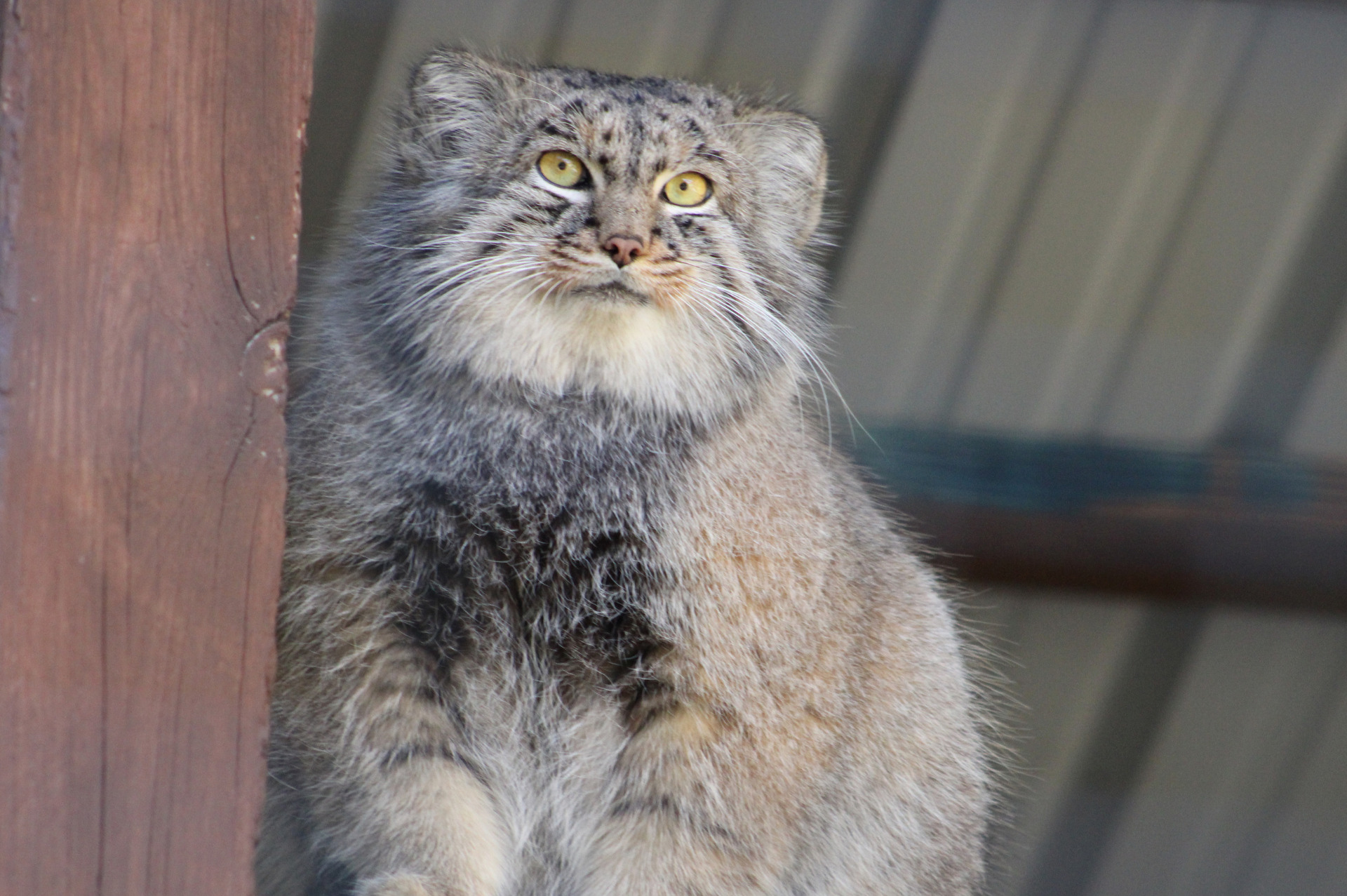Pallas's Cat

Basic Information:
Scientific Name: Otocolobus manul
Habitat: Pallas’s cats can be found throughout the cold, arid, high elevation steppes and grasslands of central Asia.
Diet: While Pallas’s cats are known to eat small mammals, insects, birds, reptiles, and carion, their preferred prey are Daurian pikas.
Size: 1 to 1.2 feet tall / 1.5 to 2.2 feet long
Weight: 6.7 pounds
Lifespan: 8.7 years according to AZA Species Survival Statistics
Distribution Map:
I.U.C.N. Conservation Status:

What does this mean?
Least Concern – a species determined by the International Union for Conservation of Nature (I.U.C.N.) to be pervasive, abundant, and thriving.
Our Pallas's Cat:
Tate (Male) – Born March 28, 2017
About Pallas's Cats:
Named after naturalist Peter Pallas, Pallas’s Cats are found in the Eurasian grassy steppes from the Mongolian deserts to the Himalayas. They have been called the most expressive – or grumpiest – cats in the world due to their snaggly teeth and rounded pupils making it easy to anthropomorphize them. However, they are not actually perpetually upset. That being said, they are primarily solitary and definitely prefer being hidden and unnoticed. They spend most of their time hopping between rocky dens in search of their favored food: the small, mountainous rodents known as pikas. Unfortunately, Pallas’s cat populations have been declining due to human expansion shrinking their habitats and limiting their food supply.
Did You Know?!
- Pallas’s cat fur is the densest fur of any cat in the world! Their fur coats help to keep them warm in the extreme temperatures that they live in.
- Like most wild felines, Pallas’s cats are solitary and only come together for breeding. Kittens will stay with the mother for about 6 months and then they are ready to go out on their own.
- Since Pallas’s cats are short and stocky in build, they are terrible runners. Because of this, Pallas’s cats take cover on boulders or in crevasses when threatened. Likewise, when hunting Pallas’s cats use an ambush method; they wait at the entrances of their prey’s burrows and then pounce once they emerge.
- Pallas’s cats can make a variety of sounds including yelps and growls (like a dog) and even purrs.
